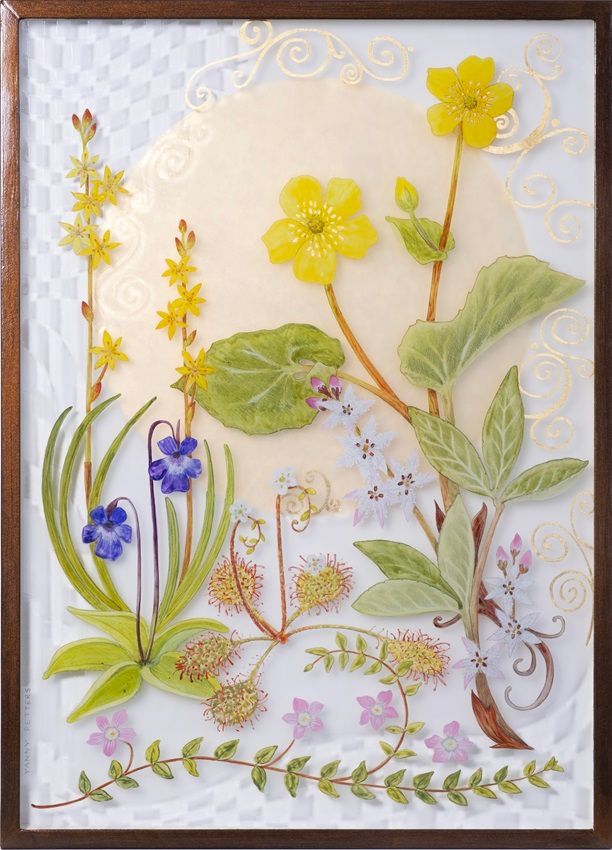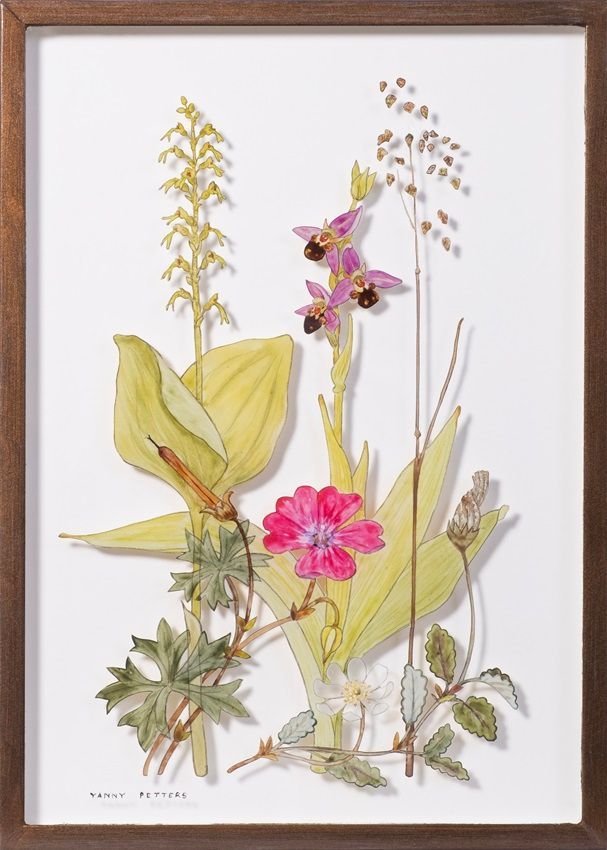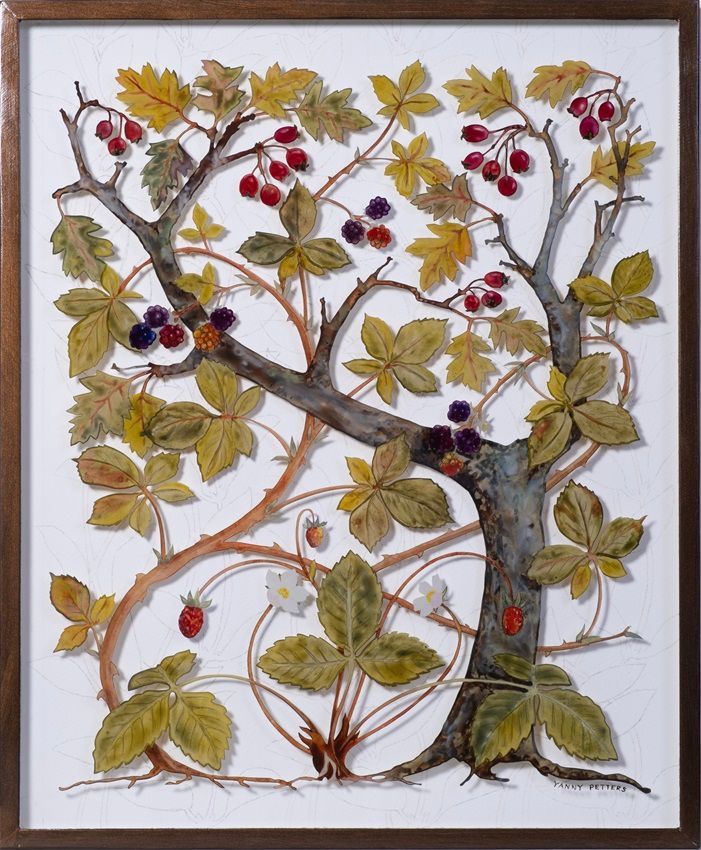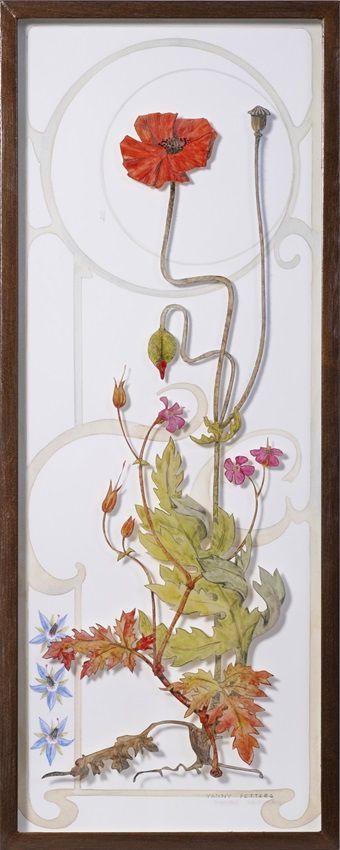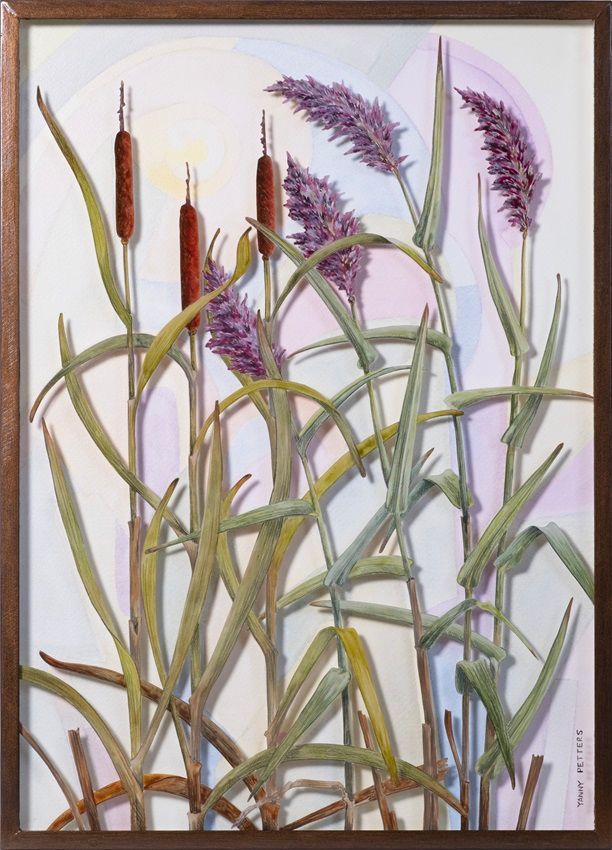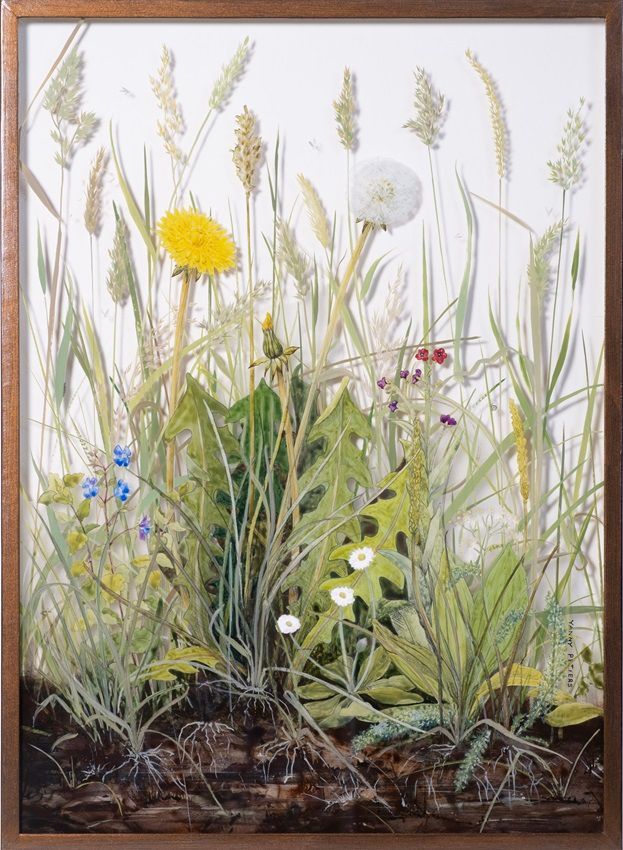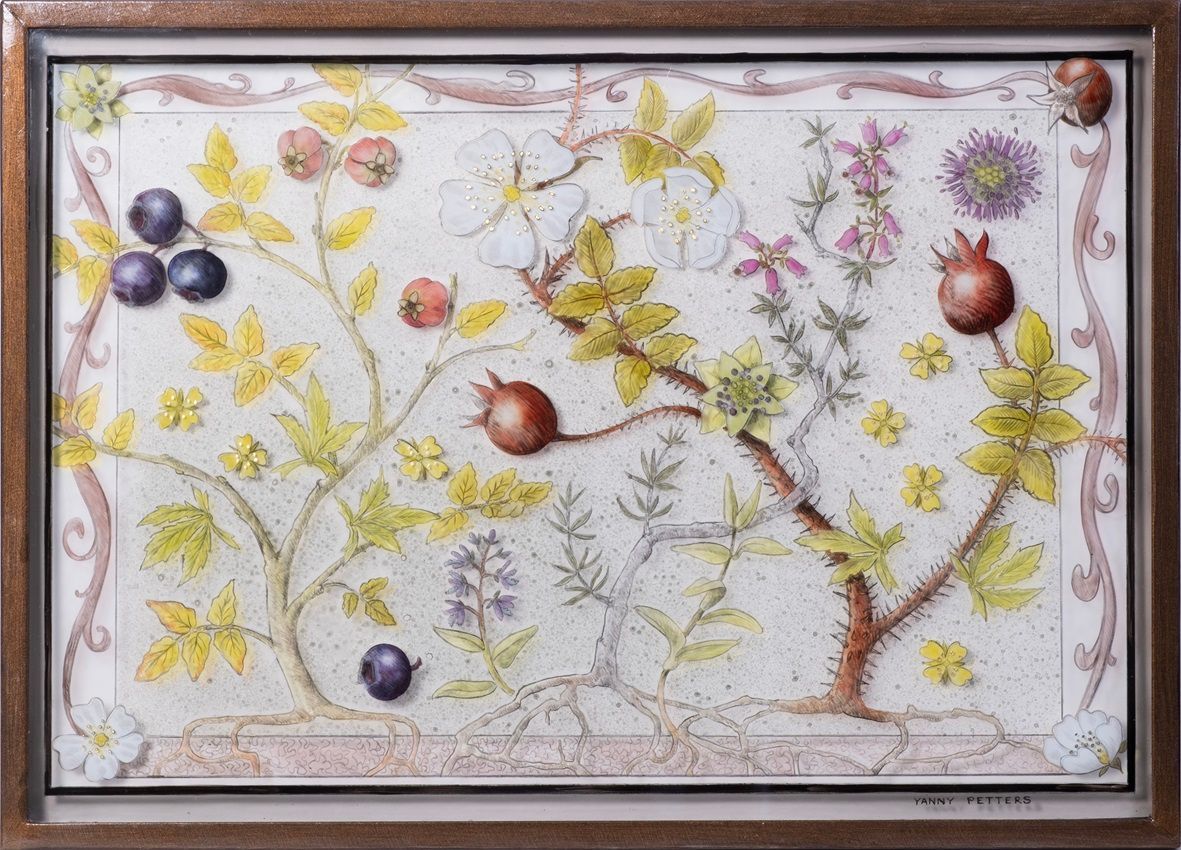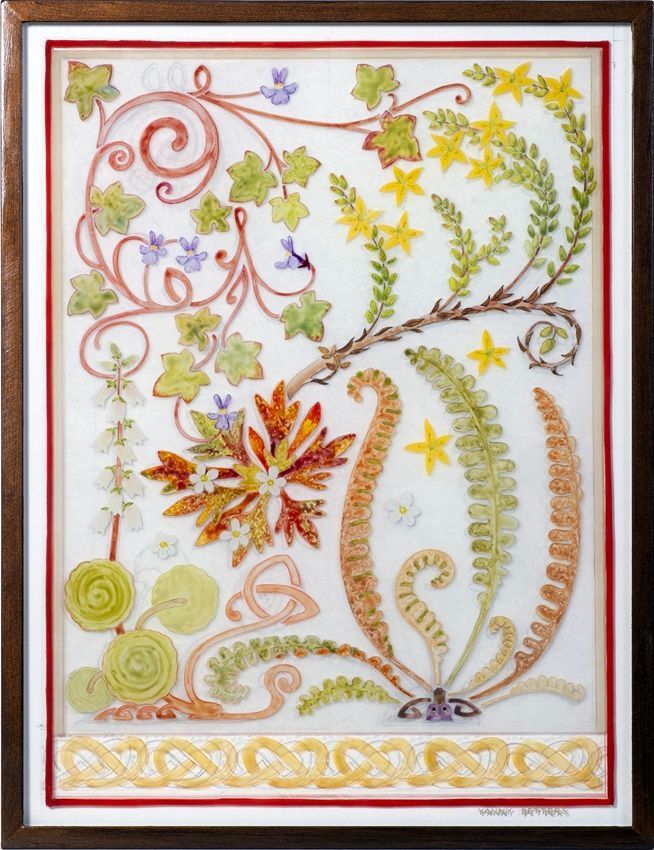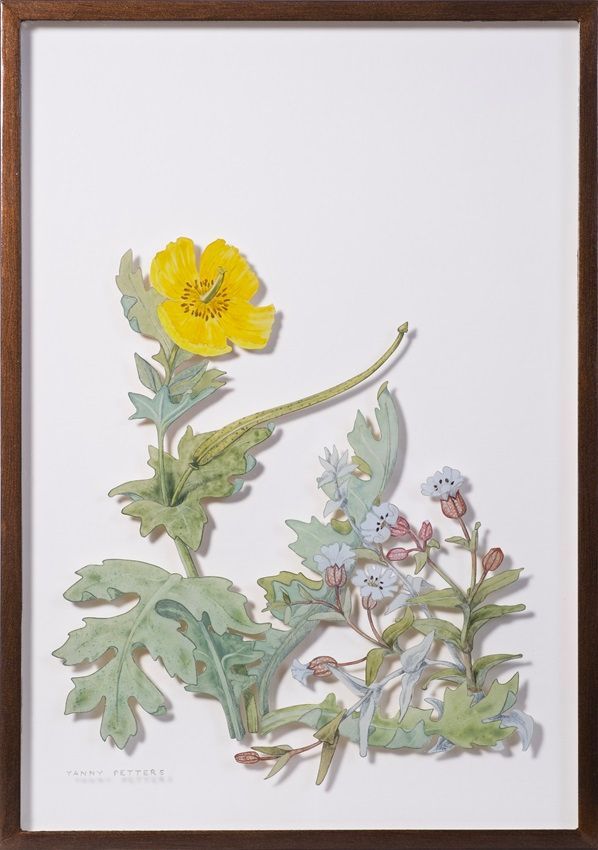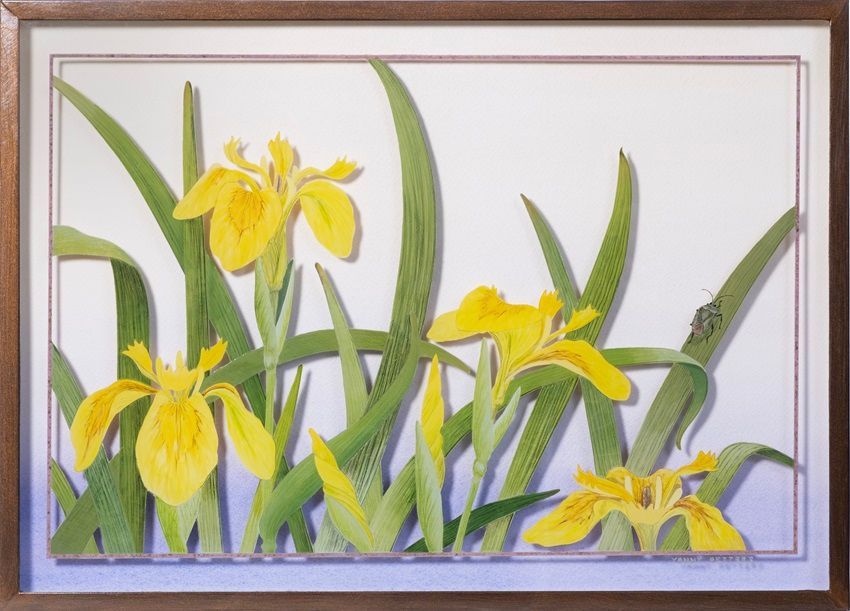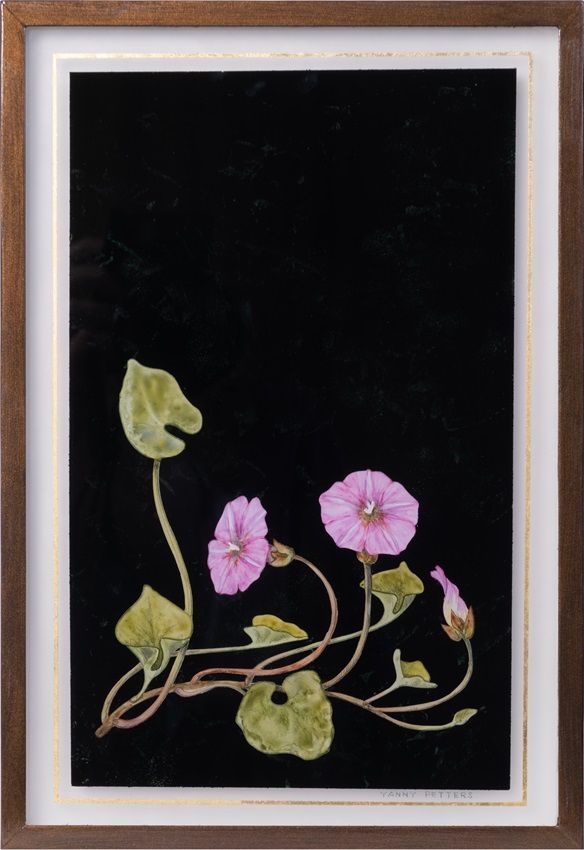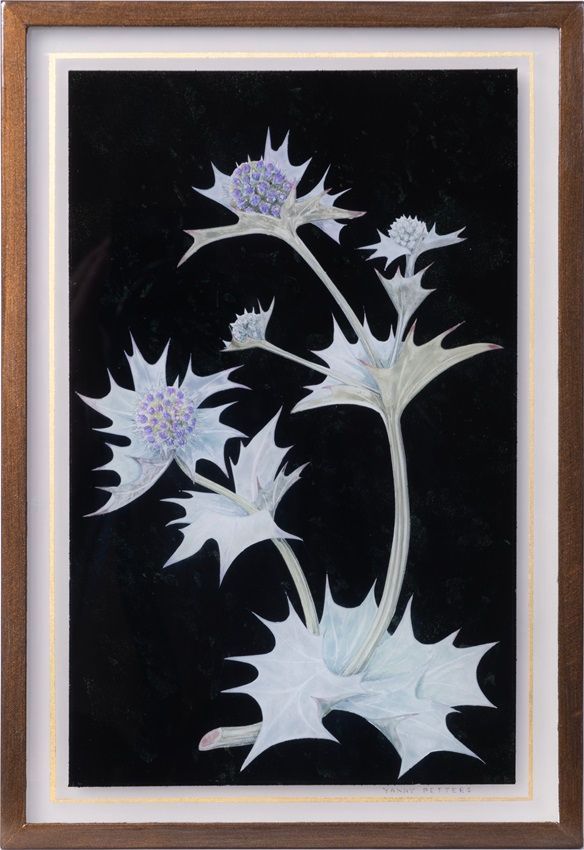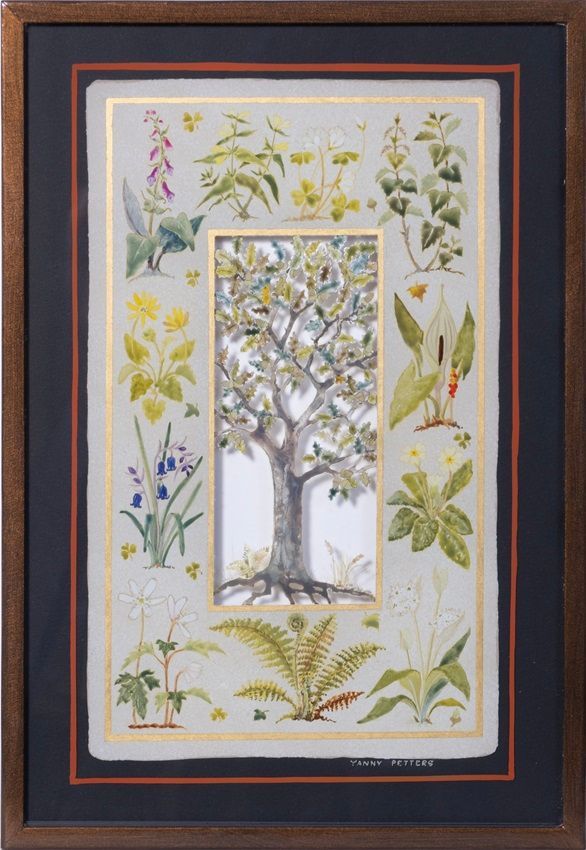Fieldwork with Mainie and Albrecht, a solo exhibition by Yanny Petters, 6 October - 10 November 2024
6 October - 10 November 2024
Solo show:
'Fieldwork with Mainie and Albrecht'
Twelve Irish habitats in homage to the artists who have inspired me
Artist: Yanny Petters
Official Opening at 3:00 pm on Sunday 6 October 2024,
Olivier Cornet Gallery, 3 Great Denmark Street, Dublin 1.
Olivier Cornet Gallery, 3 Great Denmark Street, Dublin 1.
Guest speaker: Dr Éimear O'Connor (RHA, HRUA, BA, MBA, PhD), Director of Collections and Access at the National Museum of Ireland, Dublin.
The artist and the guest speaker will be in conversation about some of the works in the show.
The exhibition is accompanied by a catalogue with an essay by Dr Hilary Pyle.
The show is also available in our 3D virtual space.
Please note that the show is part of CAGA's Dublin Gallery Weekend 2024
(8, 9 and 10 November 2024):
A special talk 'Craft in Contemporary Art Practices' will take place at 6:30pm on Friday 8 November with the OCG artists Yanny Petters, Annika Berglund
and Hugh Cummins
who will be in conversation with the art historian Jean Ryan. Click
here to find our more about the panel members.
Jean Ryan will present on ‘materiality, function and crafts relationship with the body’ and the panel will talk about materiality in their practice.
On Saturday 9 November 2024: Join us at 11am for a free Nature Printmaking demonstration
by Yanny Petters. The workshop runs from 11am to 12.30pm. Booking advised: just email info@oliviercornetgallery.com.
On Sunday 10 November 2024: Join us from 12pm to 5pm for the closing day celebrations of the exhibition Fieldwork with Mainie and Albrecht by Yanny Petters. Gallerist Olivier Cornet will give an informal tour/presentation of the show and the artist’s career. A buffet will be served from 12pm onwards (please arrive early if you don't want to miss any food).
Dublin Gallery Weekend is supported by lead partner IPUT Real Estate Dublin, media partner The Irish Times, partner Dublin City Council, with the support of CANTOR Fitzgerald, Crowe, Finlay-Mulligan, Maurice Ward Art Handling, McCarthy Insurance Group, The Merrion Hotel, Ogier, RANGE ROVER, coffeeangel, Natterjack Irish Whiskey, Whiplash Dublin
and
Green Acres.
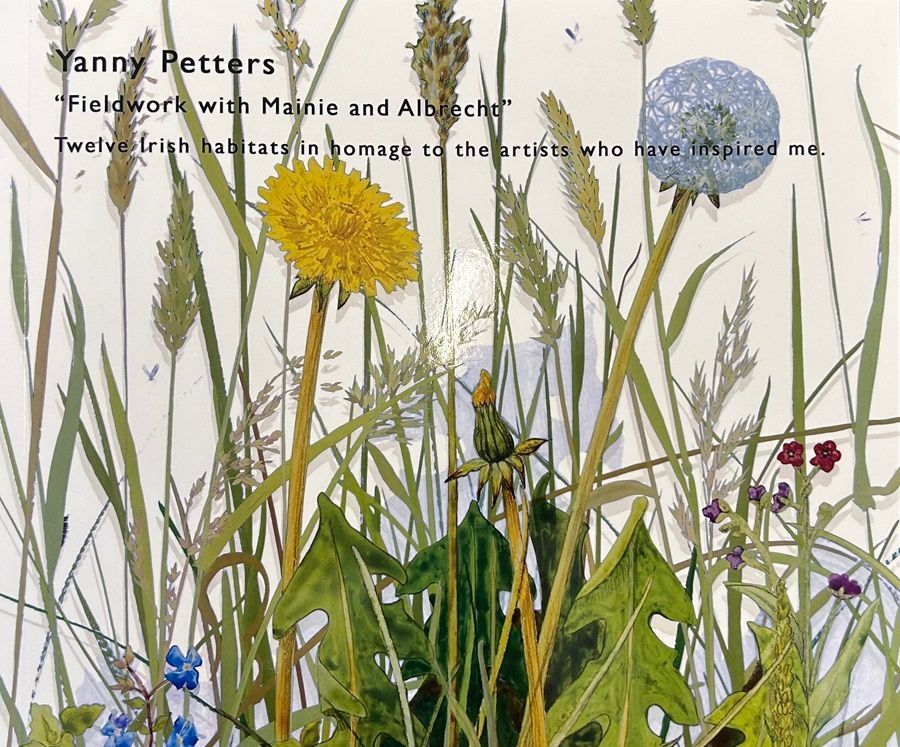
The Olivier Cornet Gallery is delighted to present Yanny Petters's new solo exhibition.
The artist's work has joined important public collections in recent years such as the National Gallery of Ireland with the work The Plants We Played With, the National Museum of Ireland with Hand Fan for Habitats and the Shirley Sherwood Gallery of Botanical Art in Kew with the work Three trees; Blackthorn, Rowan, Hawthorn. The illustrious London gallery boasts 6 works by the artist in their collection.
About the exhibition
In creating this body of work Yanny has immersed herself in the forms and colours which draw her eye to the many wild habitats of the Irish landscape. Her raison d'être is drawing our attention to the wonders and treasures around us.
While this new body of work is primarily about wild habitats, Yanny explores a common thread in her work over the last forty years with the inspiration she has drawn from the artists and creators she has admired since childhood.
Intrigued by the innate visual and emotional common ground between the elements of design and practice of these artists and the forms, colours and 'design' in nature Yanny has immersed herself in each artwork, discovering there a deeply familiar and fascinating link.
While researching each habitat from seashore to mountain bog, and musing over how the particular elements are reflected in the work of each old master, Yanny found that the plants' particular nature is reflected in the individual styles of masters such as Mainie Jellet, Albrecht Dürer, Harry Clarke, Gustav Klimt, William Morris and the Moghul artists of ancient India. It is as if there is a natural association between Yanny's perception of each habitat and the artist to whom she pays homage.
The exhibition includes twelve carefully considered artworks of habitats reflecting Yanny's own unique practice. All the pieces are reverse painted on glass in a technique known as Verre Eglomisé
which Yanny has developed since she was introduced to it in the 1980s while training as a signwriter.
Her intention as ever is to make visible that which we are inclined to dismiss - by rendering it precious. Urbanisation has made us become more removed from our natural heritage, so Yanny endeavours to open our eyes to the wonders around us so we may become enthused to protect our environment in this time of climate change.
Coverage:
- Dublin Shared Inspiration, Art Exhibitions (October, page 26), Irish Arts Review magazine, Autumn 2024 (the short mention features 'Wetland').
- "...The result is a beautifully-vibrant work containing shade and shadow..."
What lies beneath, Niall MacMonagle. Sunday Independent, online: 3 October 2024, printed on Sunday 6 October 2024.
The printed article titled 'The Simple beauty and sunshine of botanical art' can be read in full here. - Photos of the launch on 6 October 2024, published on our Facebook account:
- Photos by Tony Kearns: Album 1 - Album 2
- Photos by Didier Bianco - Dublin Gallery Weekend set to return this November with a host of Dublin galleries involved, Irish Times, 31 October 2024.
"...Nearby at Olivier Cornet Gallery, renowned botanical artist Yanny Petters will present her exhibition Field Work with Mainie and Albrecht. This is a celebration of Ireland’s diverse landscapes and the artists who have inspired her. In addition, art historian Jean Ryan will lead a discussion on the role of craft in contemporary practices with Petters, Annika Berglund, and Hugh Cummins..."
"...There are opportunities to learn, with an array of talks by artists, curators and art historians, as well as live demonstrations revealing how artists work, from Nature Printmaking (Yanny Petters) and monoprinting (Tom Phelan) to stone carving (Jason Ellis), while opportunities abound to enjoy exhibitions in more informal, sociable settings..." - Dublin Gallery Weekend to feature exhibitions, talks and guided tours, Sylvia Thomson, Fine Art & Antiques, Irish Times, 2 November 2024.
- All You Need To Know About Dublin Gallery Weekend 2024, Penny McCormick, The Gloss Magazine, 8 November 2024.
- Works from this exhibition featured very highly in Dr Éimear O'Connor's review of the artist's technique:
Art of Glass, Irish Arts Review Magazine (Spring 2025 Edition).
- Fabulous Floral Artworks To Herald Springtime, Penny McCormick, The Gloss Magazine, 1 March 2025. The article features an image of 'Bogland'.

